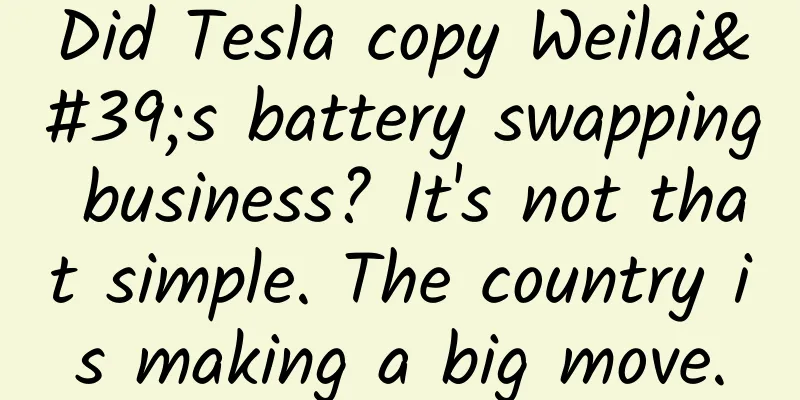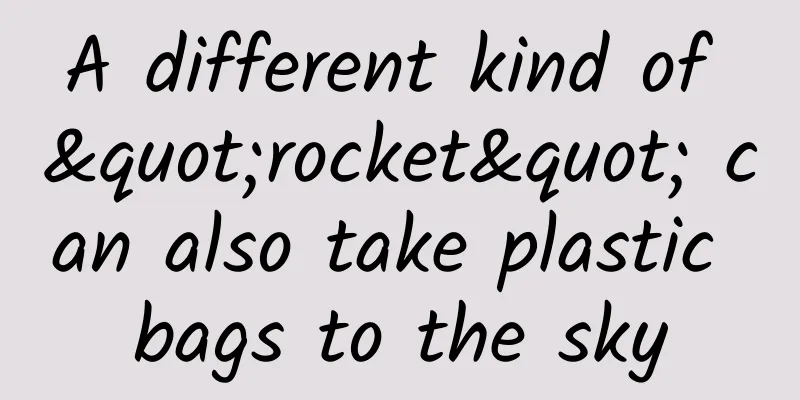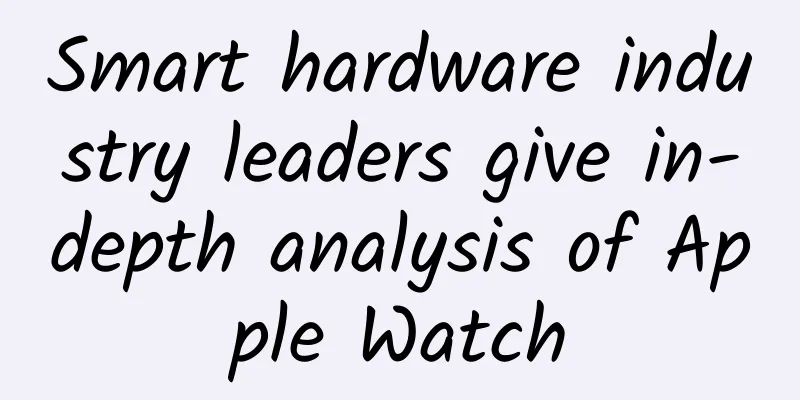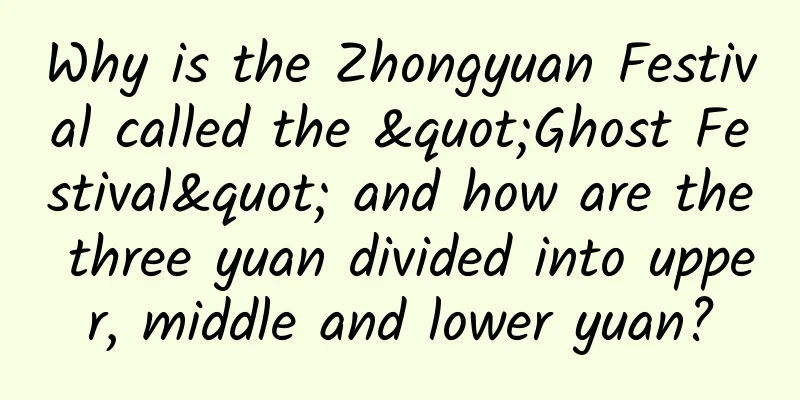Did Tesla copy Weilai's battery swapping business? It's not that simple. The country is making a big move.

|
Although Tesla's V3 super charging station can provide a peak charging power of up to 250kW, and some Model 3 models can replenish 250 kilometers of range in 15 minutes of charging, Tesla may still not be able to let go of the idea of "battery swapping". Recently, Tianyancha public data showed that Tesla (Shanghai) Co., Ltd. has added "sales of new energy vehicle battery replacement facilities" to its business scope. Some media interpreted Tesla's move as Tesla "copying NIO's homework" in the Chinese market and entering the electric vehicle battery replacement market. However, before the news attracted widespread public attention, a relevant Tesla official told the media: "Tesla will not do battery replacement and will continue to insist on charging." Tesla's timely response to the news just shows its importance and attention to the electric vehicle battery replacement market. After all, in the current domestic market, NIO, BAIC and other new car companies have also focused on or are actively preparing to enter the battery swap market. As the "big brother" in the electric vehicle industry, if Tesla does not take any response actions, it will seem that its competitors have overtaken it in terms of pace. Musk personally supports Tesla's "battery swap" In fact, Tesla has tried battery swapping before. It is not an exaggeration to call it the "pioneer of battery swapping" for contemporary electric vehicles. As early as 2013, Tesla launched a battery-swappable Model S. And Musk personally witnessed on stage that the battery-swappable speed of this Model S was faster than the refueling speed of another Audi. This battery swap technology also caused quite a stir at the time, but why didn't Tesla develop this battery swap technology? The reason is obvious: the cost is too high. What's more, Tesla did not have the title of "the world's largest automaker by market value" at the time, so it naturally did not have enough capital to bear the high cost of building battery swap stations. The 300,000 yuan threshold has become Tesla's "heartache" However, at this point in time, it is still intriguing that Tesla's business scope includes "battery swapping". However, if we consider the current domestic policy support for "battery swapping", the advantages of battery swapping and industry trends, I believe Tesla's move is much easier to understand. As early as April last year, the Ministry of Finance issued the "Notice on Adjusting and Improving the New Energy Vehicle Subsidy Policy". The notice stipulates that only new energy passenger vehicles with a pre-subsidy price of no more than 300,000 yuan are eligible for the new round of subsidies, but new energy models that support battery swapping are not subject to the 300,000 yuan price limit. NIO's entire series of models supports "battery swapping", becoming one of the "special treatments" in this round of new regulations on new energy vehicle subsidies, because the starting price of NIO's entire series of models is more than 300,000 yuan. In contrast, Tesla's current models on sale, except for the Model 3 standard range upgrade version, such as the Model 3 Performance Edition, Model Y, Model S and Model X, are all priced above 300,000 yuan, and therefore cannot enjoy subsidies. In the competition with NIO, although Tesla has the advantage of brand appeal, it still does not have as much bargaining chips as NIO in terms of price. Currently, Tesla's Model Y, which starts at RMB 339,900, is about to start mass delivery. In the future, whether Model Y can be included in the domestic new energy vehicle subsidy catalog is also crucial for Tesla. Therefore, 91che believes that Tesla has seriously considered reducing the price to less than RMB 300,000 or developing a "battery swap" model. “Battery swapping”, the best solution to range anxiety? Under the current technological level and market policy environment, "battery swapping" may be the "optimal solution" to dispel all the concerns of consumers about buying electric vehicles. If there is a battery swapping station, you can avoid the time-consuming charging during your trip. The battery can be replaced in 3-5 minutes at the battery swapping station, and the battery life will be instantly restored to full. Moreover, "battery swapping" can also create a new sales model for electric vehicles. Taking NIO as an example, in September last year, NIO launched the BaaS service based on "battery swapping technology", namely the "NIO battery rental service." Users who purchase cars using the BaaS service can enjoy an immediate discount of 70,000 yuan, which is equivalent to buying an electric car without having to buy batteries. During the later use, users can rent batteries, so they don’t have to worry about battery degradation. In addition, electric cars without battery degradation concerns will significantly increase their value retention rate. It is precisely because of such clear policy support for the "battery swap" model that it quickly attracted a large number of OEMs and professional service providers. Public data shows that as of the end of June 2020, there were a total of 452 battery swap stations in my country. In terms of provinces and cities, the top five are Beijing, Guangdong, Zhejiang, Jiangsu, Fujian and other provinces and cities. From the perspective of OEMs, NIO and BAIC New Energy are undoubtedly the "leading" automakers in the battery swap market. The difference is that BAIC New Energy's battery swap is aimed at the B-end taxi market, while NIO is targeting the C-end individual electric car owners. Policies clear all obstacles to "battery replacement" It is also worth mentioning that "battery swapping" has also received clear support at the national policy level. In May last year, when answering reporters' questions at the "Minister's Channel" of the Two Sessions, Miao Wei, Minister of Industry and Information Technology, clearly stated that he would continue to increase the construction of charging and swapping infrastructure and encourage various types of charging and swapping facilities to achieve interconnection. At the same time, thanks to the time and experience accumulated in the electric vehicle "battery swap" industry, in August last year, the GB/T "Safety Requirements for Electric Vehicle Battery Swapping" recommended national standard drafted by BAIC New Energy, NIO, China Automotive Technology and Research Center and other units passed the review. This means that in the future, my country's battery swap industry will also be expected to reach a unified "battery swap alliance" and form a "battery swap standard" that supports the interconnection of various car companies and enterprises. This may also be the basic premise for the successful implementation and profitability of electric vehicle "battery swap". And car companies such as BAIC and NIO that play a leading role will also gain first-mover advantages in the electric vehicle battery swap market in this process. However, any technology that can cause "disruption" will not be smooth sailing before its arrival. Obviously, there are various internal and external contradictions in the current "battery swap" of electric vehicles. From the macro perspective of the electric vehicle industry, the battery swap model has a brighter prospect, but in the absence of national financial subsidies, from the perspective of OEMs and enterprises, the "battery swap" industry is not as attractive as written in market research reports. According to statistics, as of the end of June 2020, the operator with the largest number of battery swap stations in the country is Aulton New Energy, with a total of 222 stations; NIO ranks second, with a total of 136 stations; and Hangzhou Botan ranks third, with a total of 94 stations. Compared with the number of gas stations across the country, the number of battery swap stations can be said to be a drop in the bucket. However, even so, the high cost of building stations has become a financial burden that companies cannot bear. A normal battery swap station has a very high cost. A staff member of the Weilai battery swap station once said that the internal estimate of the cost of a battery swap station is about 3 million yuan. Previously, the Chengdu Mashiqiao battery swap station was hit and the insurance company was reported for compensation. The cost of the shell alone was as high as 500,000 yuan. BAIC New Energy officials once told the media that the construction cost of a battery swap station is nearly 10 million yuan. According to the standard, each station needs to reserve at least 28 replacement batteries. The cost of each battery is priced at 115,000 yuan, and the cost of battery reserve alone is as high as 3.22 million yuan. This does not include labor costs, site fees and subsequent operation and maintenance costs. On the one hand, the cost of building battery swap stations is high, and on the other hand, there are very few vehicles that "swap batteries". Currently, in addition to third-party companies that are actively developing platforms that can support battery swaps for multiple car companies, some car companies are still fighting on their own due to their own battery swap channel construction and operation, and the cost of battery swaps remains high. It is precisely for this reason that many car companies are still in the exploration and wait-and-see stage for the "battery swap" model. New infrastructure of “power swapping” It is a consensus among many automakers and service providers that battery swapping for electric vehicles has a bright future. At least at the policy level, the management department has cleared the obstacles for market popularization. Last year, in addition to the clear support policies of the Ministry of Industry and Information Technology, battery swapping stations, as an important part of new infrastructure, were also written into the government work report for the first time. At the corporate level, BAIC Group has joined hands with State Grid Electric Vehicle Company to carry out in-depth cooperation in the battery swapping business, and has taken the lead in piloting the separation of vehicle and battery. It strives to fully cooperate in the construction of 100 battery swapping stations before the end of June 2021, serving no less than 10,000 battery swapping vehicles across the country. In general, electric vehicle battery swapping currently has the advantages of favorable policies, high consumer acceptance, and bright industry prospects. Although there are still some disadvantages such as high initial site construction investment, high later operating costs, and unclear business profit models, in the later stages of industry development, these problems may be solved through a unified "battery swap alliance" to expand the base of battery swap vehicles. At present, although Tesla has officially stated that it will not get involved in the battery swap industry, it does not rule out the possibility of early layout. After all, Tesla's boss is the craziest but most realistic Musk. As a winner of Toutiao's Qingyun Plan and Baijiahao's Bai+ Plan, the 2019 Baidu Digital Author of the Year, the Baijiahao's Most Popular Author in the Technology Field, the 2019 Sogou Technology and Culture Author, and the 2021 Baijiahao Quarterly Influential Creator, he has won many awards, including the 2013 Sohu Best Industry Media Person, the 2015 China New Media Entrepreneurship Competition Beijing Third Place, the 2015 Guangmang Experience Award, the 2015 China New Media Entrepreneurship Competition Finals Third Place, and the 2018 Baidu Dynamic Annual Powerful Celebrity. |
Recommend
Is Intel to blame for MacBook Pro's interface and memory limitations?
Intel processors have been identified as the caus...
How can online education attract new users at low cost for the five types of users?
After years of technological development, and wit...
Grill meat scientifically and become the coolest guy at the table!
As the weather warms up, it's time for a picn...
How to cold-start community activities in 7 cities within 7 days
Based on the experience of previous event operati...
How to deliver information flow in the gaming and software industries? One article to understand
The e-commerce industry is indeed the hottest ind...
Commonly used tool classes in Android development
As a new programmer, it's time to sort out so...
WeChat 7.0.10 has many small changes besides dark mode
Recently, WeChat released the 7.0.10 beta version...
Electric stove, induction cooker, ceramic stove, which one should you choose for making tea around the stove?
Boiling tea around the stove, the warmth and the ...
How can an English novice master Alibaba International Station and build a top 10 store
Learn to master: Learn how to operate Alibaba Int...
If there is a lot of foam in the urine, does it really mean that my kidneys are not in good condition?
gossip "Excessive foam in urine indicates ki...
Zhihu Promotion and Operation: How to become a Zhihu celebrity with millions of likes?
How to become a Zhihu celebrity with millions of ...
Soul Competitive Product Analysis
In the stranger social industry, if a social appl...
Activity operation, a complete analysis of the gameplay of flash sales activities
618 is getting closer, and major e-commerce websi...
The latest gamification operation methodology in 2020!
Preface How can you make users addicted to your p...








![[Longtou Taishan] "Longtou Daily Limit Code Course and VIP Information" Bottom First Board Strategy PDF Article](/upload/images/67cbffcd32c03.webp)
